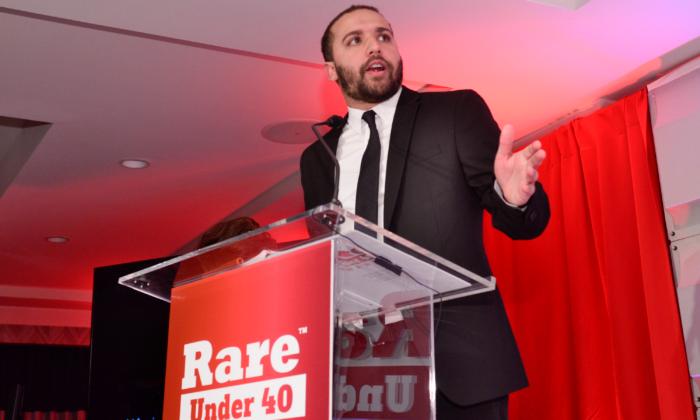Commentary
The United States, we’re told, is a country defined by
white supremacy and white grievance. An increasing number of Americans, according to Wesley Lowery, author of the new book “
American Whitelash,” resent the idea of racial progress. This, I contend, is a point of view that’s completely detached from objective reality.
Lowery’s book has been met with rave reviews by those on the left. Ibram X. Kendi, one of America’s more prominent antiracists,
called the book “indispensable.” Is it, though? Or is it simply contributing to a false narrative that continues to paint the United States in an incredibly dangerous light?
Lowery isn’t the only prominent individual who believes white supremacy is
a defining feature of the nation’s ideological fabric. During a recent
commencement address at Howard University, one of the country’s most prominent, historically black research institutions, President Joe Biden asked all in attendance “to stand up against the poison of white supremacy” and “to single it out as the most dangerous terrorist threat to our homeland.”
If you believe the country is built on a foundation of racism, then, as obvious as it sounds, you should expect to see racism everywhere you look. This point is emphasized by a recent
Fortune piece, which focuses heavily on a young black woman by the name of Makia Green. With $20,000 in student debt, Ms. Green is “counting on President Joe Biden’s promised debt relief to wipe nearly all of that away.”
Currently working as a community organizer, Ms. Green, who has already had a sizable chunk of her debt forgiven via the
AmeriCorps program, said she feels “like working people have been through enough—I have been through enough. From a pandemic, an uprising, a recession, the cost of living price going up. I deserved some relief.” As the article notes, Green and “many other people of color” firmly believe that those who oppose debt relief also oppose “racial progress in higher education.”
Green, obviously eager to make a point, called opposition to debt relief “white supremacy at work.” What we are witnessing, she insists, is “a long tactic of conservative, white supremacist-leaning groups to use education and limit Black people’s access to education, as a way to further control and oppress us.”
White supremacy isn’t just affecting the world of higher education. Sara Heath, the senior editor at Patient Engagement News,
recently argued that it’s “nearly impossible for healthcare to address its equity problem without acknowledging the role of the weathering hypothesis, a concept stating that experiences with racism and discrimination can have adverse health consequences.”
According to Ms. Heath, “It is clear that weathering has a place in the health equity conversation.”
For the uninitiated,
the weathering hypothesis posits that chronic exposure to racism and various social and economic injustices have an adverse effect on the health of minorities, particularly the health of black people. Black people, according to Heath, experience an array of nasty physical health conditions “because they are chronically exposed to racism and discrimination.”
A
recent study carried out by researchers at Columbia University Medical Center appeared to confirm Ms. Heath’s controversial take (emphasis on the word “appeared”). In an interview
with Stat, Indira C. Turney, one of the authors of the study, said that “the brains of Black participants in mid-life looked like the brains of older adults.” However, as the author of the Stat piece, Usha Lee McFarling, noted:
“Given that Hispanic people also face structural inequities, the team was also surprised that early brain aging did not appear to the same extent in that cohort, which was made up largely of immigrants from the Dominican Republic and their children.”
This striking difference, according to the writer, “is something Turney plans to explore in future research.”
Could it be that the weathering hypothesis lacks scientific validity?
This isn’t to say that racism doesn’t exist in America. Of course it does. But racism exists everywhere. The United States of 2023 is not the United States of 1963. In truth, the United States is one of the most
open-minded countries in the world. Those open to experience are
highly unlikely to embrace racism.
It’s important to remember that
94 percent of U.S. adults approve of marriages between black and white citizens. Ten years ago,
87 percent of the population approved of interracial marriage. Only 4 percent approved in 1958. For those who say no progress has been made in the United States, let those stats sink in. How can a country built on racism also be so open to interracial marriage? It doesn’t make any sense.
As the evolutionary anthropologist Robert Lynch
recently emphasized, the United States isn’t divided by race; it’s divided by class. “Parental income is the single biggest predictor of a person’s lifelong earnings,” noted Lynch. “Poor white boys and poor black boys who grow up in the same neighbourhood in Los Angeles, for example, are equally likely to be poor as adults,” he added.
So, for once, let’s have an honest discussion about racism. Yes, racists exist, and yes, further progress must be made. But let’s not fool ourselves into thinking that racism is a defining feature of life in modern-day America. Such thinking is both disingenuous and deeply disturbing.
Views expressed in this article are opinions of the author and do not necessarily reflect the views of The Epoch Times.





